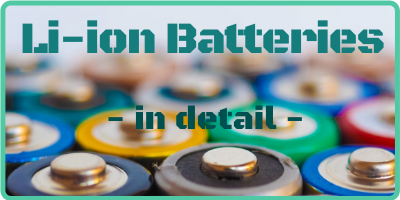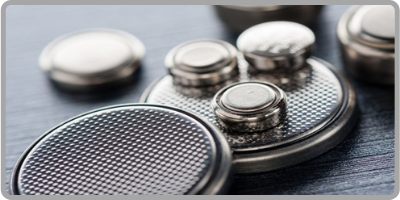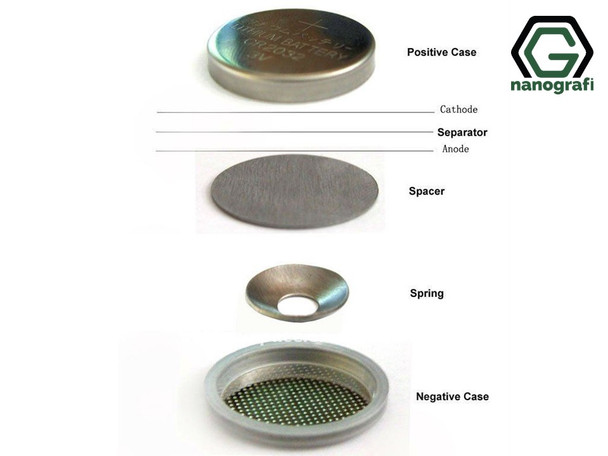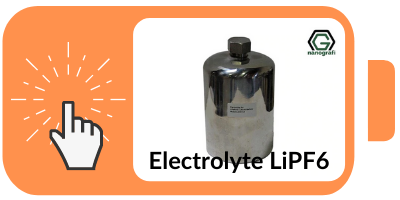Lithium hexafluorophosphate - Nanografi Blog
As an environment-friendly compound and thermally stable salt, Lithium hexafluorophosphate (LiPF6) is a white crystalline powder soluble in non-aqueous polar solvents such as N,N’-dimethylformamide (DMF) and acetonitrile (AN) used extensively in manufacturing lithium-ion batteries for commercial purposes 12. The thermal stability of this inorganic conductive salt at temperatures of at least 80˚C up to 200 ˚C is mainly in the absence of water supporting the non-aqueous chemistry it has 3.
Click Image to Learn More - In detail - About Li-ion Batteries
LiPF6 solutions in linear carbonates such as ethylene carbonate, dimethyl carbonate, diethyl carbonate, ethyl methyl carbonate as well as small quantities of additives like vinylene carbonate are regarded as cutting-edge electrolytes to be used in lithium-ion battery fabrication. The widespread application of LiPF6 in the above-mentioned solutions with considerable conductivity takes the advantage of hexafluorophosphate anion’s non-reactive nature against strong reducing agent such as metallic lithium 4. The alkyl carbonates solutions of LiPF6 have promising results as high-quality electrolyte with practically low HF (<50 ppm) and H2O (<15 ppm) which is a critical point to obtain high performance for electrochemical applications.
Compared to many conventional electrolyte salts like LiAsF6, LiBF4 and LiClO4, LiPF6 has a wider window of electrical and electrochemical stability capable of forming solid electrolyte interface (SEI) membrane in electrodes (cathodes). What’s more, LiPF6 can prevent the anode current collectors from dissolution through making them passive4. This specification of LiPF6 is highly advantageous since the metallic anode is broadly employed to build batteries with high energy and density namely lithium-sulfur and lithium-oxygen batteries which is in turn due to its small negative potential and remarkably high specific capacity of about 3860 mAh g-1 5. Therefore, the use of LiPF6 is critically felt in order to stabilize the Li anode.
LiPF6 is widely used to increase the conductivity of polymer electrolytes. Among this class of electrolytes (such as Mg(NO3), LiCF3SO3, KI, NaClO3), LiPF6 stands out as the only salt employed in Li-ion batteries. The interesting thing is the conductivity increases as the concentration of LiPF6 goes up to 15wt.% in the solution. As an instance, the highest conductivity of 4.10×10-5‑ S cm-1 can be achieved with 20 wt.% at room temperature. Based on XRD characterizations, the concentration-dependent increase in the conductivity of LiPF6 is due to a phase change phenomenon through which the crystalline structure becomes amorphous when the concentration increases 6.
Click Image to Learn Differences Bestween Li-ion Batteries and Graphene Batteries
It has to be taken into consideration that the amount of H2O must be kept as low as 1 mg L-1 and less 6. The higher conductivity of LiPF6 is attributed to its larger anion radius and therefore, higher ionic dissociation ability as well. To clarify this, it should be noted that the coulombic force between the anion and Li+ is weaker, according to Coulomb’s law 7.
There are conventional and modern approaches to prepare LiPF6. The traditional method adopts the use of hydrogen florid (HF) solvent yet it suffers from three drawbacks including the high toxicity of HF which leads to dangerous preparation conditions and the need to use specific reaction instrumentation and devices, the presence of large quantities of impurities in the product as LiPF6.HF and finally, the consumption of a lot of energy as the reaction takes place in really cold temperatures. This process leaves amounts of HF in the reaction media which brings about periods of erosion in electrodes and consequently, causes the capacity of batteries to decrease significantly. To overcome this problematic reaction condition and approach, LiPF6 is suggested as a promising solution based on a modern technique. In so doing, CaF2 and P2O5 are employed to prepare PF5 (known as thoroughly-dry method) and the highly toxic HF is replaced with acetonitrile which is actually a solvent with low toxicity, no environmental pollution and contamination. Technically speaking, acetonitrile is considered as an extremely beneficial to separate and purify LiPF6 4.
Key words: PiPF6, Lithium hexafluorophosphate, environment-friendly, electrolyte, Li-ion Battery, Lithium-ion Battery, non-aqueous electrolyte, highly conductive electrolyte, commercial batteries.
CLICK IMAGE TO BUY
References
1. Goodenough, J. B. & Kim, Y. Challenges for rechargeable Li batteries. Chem. Mater. 22, 587–603 (2010).
2. Qian, Y. et al. How electrolyte additives work in Li-ion batteries. Energy Storage Mater. 20, 208–215 (2019).
3. Wiemers-Meyer, S., Jeremias, S., Winter, M. & Nowak, S. Influence of Battery Cell Components and Water on the Thermal and Chemical Stability of LiPF6 Based Lithium Ion Battery Electrolytes. Electrochim. Acta 222, 1267–1271 (2016).
4. LIU, J. wen et al. Preparation and characterization of lithium hexafluorophosphate for lithium-ion battery electrolyte. Trans. Nonferrous Met. Soc. China (English Ed. 20, 344–348 (2010).
5. Liu, J., Wang, Y., Liu, F., Cheng, F. & Chen, J. Improving metallic lithium anode with NaPF6 additive in LiPF6-carbonate electrolyte. J. Energy Chem. 42, 1–4 (2020).
6. Ibrahim, S., Yassin, M. M., Ahmad, R. & Johan, M. R. Effects of various LiPF6 salt concentrations on PEO-based solid polymer electrolytes. Ionics (Kiel). 17, 399–405 (2011).
7. Moumouzias, G., Ritzoulis, G., Siapkas, D. & Terzidis, D. Comparative study of LiBF4, LiAsF6, LiPF 6, and LiClO4 as electrolytes in propylene carbonate-diethyl carbonate solutions for Li/LiMn2O4 cells. J. Power Sources 122, 57–66 (2003).
Recent Posts
-
Reducing the Carbon Footprint of Nanomaterials
The production of nanomaterials is vital for numerous advanced applications, from healthcare to elec …26th Apr 2024 -
Nanocomposites in Food Packaging
The utilization of nanocomposites in food packaging represents a significant advancement in the fiel …19th Apr 2024 -
What is the Difference Between 7075 and 6061 Aluminum Alloy?
When comparing 7075 aluminum alloy to 6061 aluminum alloy, it's essential to understand their disti …5th Apr 2024









